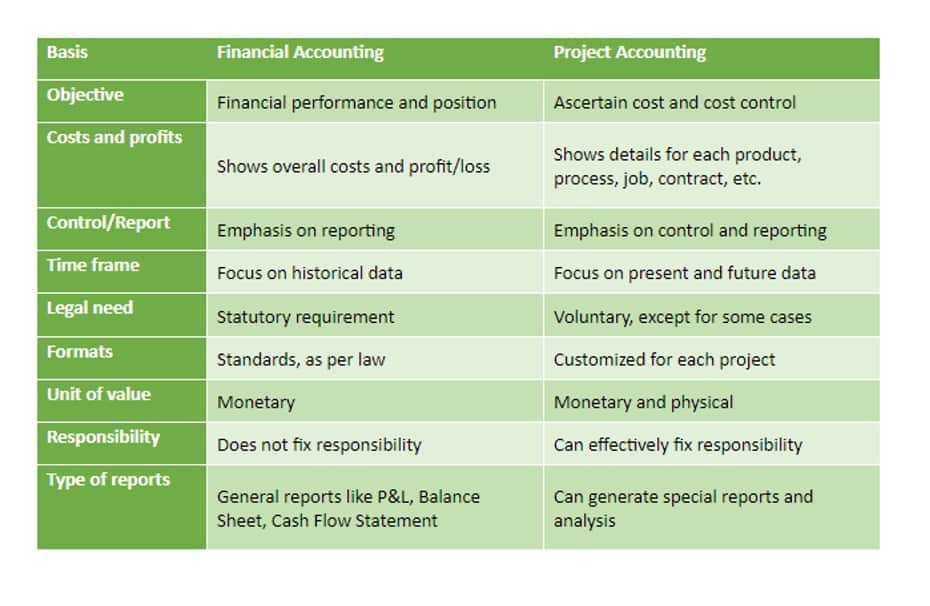What Are Internal Controls?
Content

Examples include reconciliations, monitoring of actual expenses vs. budget, prior periods and forecasts. Internal control can be expected to provide only reasonable, not absolute, assurance to an entity’s management and board. The third step is to identify controls that will protect the business from fraud or other abuses. Remember the goal is to make sure one or more people are involved as oversight in every process. Based on Peer Review results, many auditors have been challenged in applying the requirements related to internal control in AU-C’s 315 and 330. Attend this webcast to learn about common missteps and how to avoid them in your practice. When equipment, inventories, securities, cash and other assets are secured physically.

The auditor should consider the combined effect of various types of evidential matter relating to the same assertion in evaluating the degree of assurance that evidential matter provides. In some circumstances, a single type of evidential matter may not be sufficient to evaluate the effective design or operation of a control. To obtain sufficient evidential matter in such circumstances, the auditor may perform other tests of controls pertaining to that control.
What Is A Controller And How Are They Involved In Internal Controls?
Streamlining these items is an important internal accounting control that businesses tend to overlook in the rush to implement more obvious control systems. All internal control systems need to be monitored to assess quality in the system’s performance. This is usually managed through a combination of evaluations and ongoing monitoring activities. In a small business, the executives have first-hand knowledge of expected activities and close involvement with employees and operations allows them to easily identify variances and potential accounting internal controls inaccuracies in the reported information or methods. In larger companies, more formal integrated systems are used because it is impractical for upper level management to speak with all employees. “Risk assessment…involves identification and analysis of the risks of material financial misstatement,” states Thomas Ratcliffe in the “Journal of Accountancy”. In a small business, risk assessment is often efficient since the management or owner has in-depth knowledge of the company’s workings and therefore knows where the risks are greatest.
When intentional errors occur, the responsible individual should be investigated and disciplined. Sometimes, the errors are accidental; that is, they are honest mistakes by an individual.
- In obtaining knowledge about whether controls have been placed in operation, the auditor determines that the entity is using them.
- In such cases, the auditor considers whether evidential matter sufficient to support a further reduction is likely to be available and whether performing additional tests of controls to obtain such evidential matter would be efficient.
- The Group companies ensure the compliance and timeliness of their accounting-related processes and systems and, in doing so, are supported and monitored by Group Accounting.
- The auditor should obtain sufficient knowledge of the control environment to understand management’s and the board of directors’ attitude, awareness, and actions concerning the control environment, considering both the substance of controls and their collective effect.
- How the information system captures other events and conditions that are significant to the financial statements.
They assess whether the controls are properly designed, implemented and working effectively, and make recommendations on how to improve internal control. They may also review Information technology controls, which relate to the IT systems of the organization. Internal controls are actions, procedures, and policies that are designed to safeguard assets and ensure that all transactions are recorded completely, timely, and accurately in the accounting records.
Internal Controls
The classes of transactions in the entity’s operations that are significant to the financial statements. Communication involves providing an understanding of individual roles and responsibilities https://www.bookstime.com/ pertaining to internal control over financial reporting. Internal controls are intended to prevent errors and irregularities, identify problems and ensure that corrective action is taken.
For example, the same person who is responsible for an asset’s recordkeeping should not be respon sible for physical control of that asset Having different indi viduals perform these functions creates a system of checks and balances. So, if inventory is ordered at the beginning of the month, that inventory should be used by the end of the month with no leftovers. With Ted closely monitoring the cost of inventory on hand at the beginning of the month, as well as the amount of on-hand inventory at the end of the month, he can create an accurate report for company leaders to see how well they’re meeting their goals. Segregation of Duties — Segregation of Duties is an example of preventative control that divides the duties of custody, recording, and authorization. In this division, no party has control over more than one duty, and it is important because it makes it hard for an intentional loss or negative event to occur. Corrective controls — Corrective controls are reactive controls employed or activated after detective controls have flagged down a negative event. These controls allow for improving existing controls by reacting effectively to the negative event.
Framework For Internal Accounting Controls
Internal controls in accounting are procedures that are put in place within an organization to ensure business is carried out in an orderly, effective and accurate manner. There are four reasons that internal controls within an organization are important.
- You should have an accounting professional diligently review bank statements, check registers, bank reconciliations and payroll records regularly.
- Do not have the same person perform multiple accounting functions that are not reviewed by at least one or more other professionals.
- The mere fact that each step may be checked by an independent and objective party can be a huge deterrent to potentially fraudulent behavior.
- Your company may have need of more or less of these buckets, but they are a good place to start.
- For example, a programmed application control should function consistently unless the program is changed.
Examples of detective controls include matching physical counts to inventory records, reconciling bank statements to company records, … For other controls, however, such documentation may not be available or relevant. In such circumstances, evidential matter about the effectiveness of design or operation may be obtained through such methods as observation, inquiry, or the use of computer-assisted audit techniques. The risk of material misstatement fn 11 in financial statement assertions consists of inherent risk, control risk, and detection risk. Inherent risk is the susceptibility of an assertion to a material misstatement assuming there are no related controls. Control risk is the risk that a material misstatement that could occur in an assertion will not be prevented or detected on a timely basis by the entity’s internal control.
Operational Internal Controls
Another familiar internal control to prevent fraud is to limit access to only authorized personnel, such as preventing unauthorized personnel from getting access to a warehouse and stealing inventory for resale. Another access content might involve allowing only accounting employees to access accounting systems.
- The Sarbanes-Oxley Act of 2002 gave managers the capacity to establish and manage internal controls in companies.
- Effective controls help ensure that financial reporting is accurate and adequately addresses investment, capital and credit requirements.
- Regardless of the assessed level of control risk, the auditor should perform substantive procedures for all relevant assertions related to all significant accounts and disclosures in the financial statements.
- Alternatively, an entity may have complex, highly integrated systems that share data and that are used to support all aspects of the entity’s financial reporting, operations, and compliance objectives.
- It takes place with a combination of interrelated components – such as social environment effecting behavior of employees, information necessary in control, and policies and procedures.
- Internal control, no matter how well designed and operated, can provide only reasonable assurance of achieving an entity’s control objectives.
With us at your side, this is the moment to develop innovative solutions within your accounting and internal controls, build trust and discover previously unseen opportunities in digital. In this new position, your business is responsible and capable in the everyday, prepared for new challenges and poised to embrace the next opportunity.
Accounting Internal Control Systems To Protect Your Business
A key concept is that even the most comprehensive system of internal control will not entirely eliminate the risk of fraud or error. There will always be a few incidents, typically due to unforeseen circumstances or an exceedingly determined effort by someone who wants to commit fraud. Occasional accounting reconciliations mean that account balances in the company system can be matched up with balances in independent accounts such as credit customers, suppliers, and banks. Corporate governance is the set of rules, practices, and processes used to manage a company.

For example, computer-assisted audit techniques may be used to test automated controls or data related to assertions. Also, the auditor may use other automated tools or reports produced by IT to test the operating effectiveness of general controls, such as program change controls, access controls, and system software controls. The auditor should consider whether specialized skills are needed to design and perform such tests of controls. The related accounting records, whether electronic or manual, supporting information, and specific accounts in the financial statements involved in initiating, recording, processing, and reporting transactions. A controller is a financial professional who is responsible for all accounting activities within an organization. They are in charge of regulatory reporting and compliance as well as budgeting, preparing tax documents and developing accounting policies. Controllers act as a manager to oversee that all internal controls are both effective and followed by all staff.
Follow up on any complaints from customers, vendors and financial service providers regarding inefficient accounting policies or procedures immediately. These can be early warning signals to potentially large problems looming in the future.

Outside auditors may rely upon a company’s system of internal controls when planning an audit. If the firm has a robust system of internal controls, then the auditors will test the reliability of those controls, and then reduce their other audit activities. Conversely, if the organization has poor internal controls, then the auditors must include substantially more audit procedures in their plan, which drives up the cost of the audit. In short, a robust system of internal control can reduce the price of the year-end audit. This is a significant issue for publicly-held companies, which spend inordinate amounts on annual audits and quarterly reviews by their auditors. Separation of duties, a key part of the preventive internal control process, ensures that no single individual is in a position to authorize, record, and be in the custody of a financial transaction and the resulting asset. Authorization of invoices, verification of expenses, limiting physical access to equipment, inventory, cash, and other assets are examples of preventative internal controls.
Obtaining An Understanding Of Internal Control
He knows that whether it’s good or bad, he has to report information that is truthful and accurate. Because the FASB and GAAP require that it be, which exemplifies the third purpose of internal controls. Well, a few weeks later, Ted begins to notice a pattern of transposition errors with that one specific clerk.
Auditors Role In The Control Process
They may be employed in accordance with many different goals, such as quality control, fraud prevention, and legal compliance. Here, the most important activity is reconciliation, used to compare data sets, and corrective action is taken if there are material differences. Other detective controls include external audits from accounting firms and internal audits of assets such as inventory.
The plan that company leaders laid out was to keep on-hand inventory at a minimum so that at the end of the year, the cost of inventory on hand wouldn’t eat away their profit. Ted’s job is to ensure that each dollar amount spent on inventory is used in the appropriate period.
Download Courses And Learn On The Go
Do not have the same person perform multiple accounting functions that are not reviewed by at least one or more other professionals. The mere fact that each step may be checked by an independent and objective party can be a huge deterrent to potentially fraudulent behavior.



